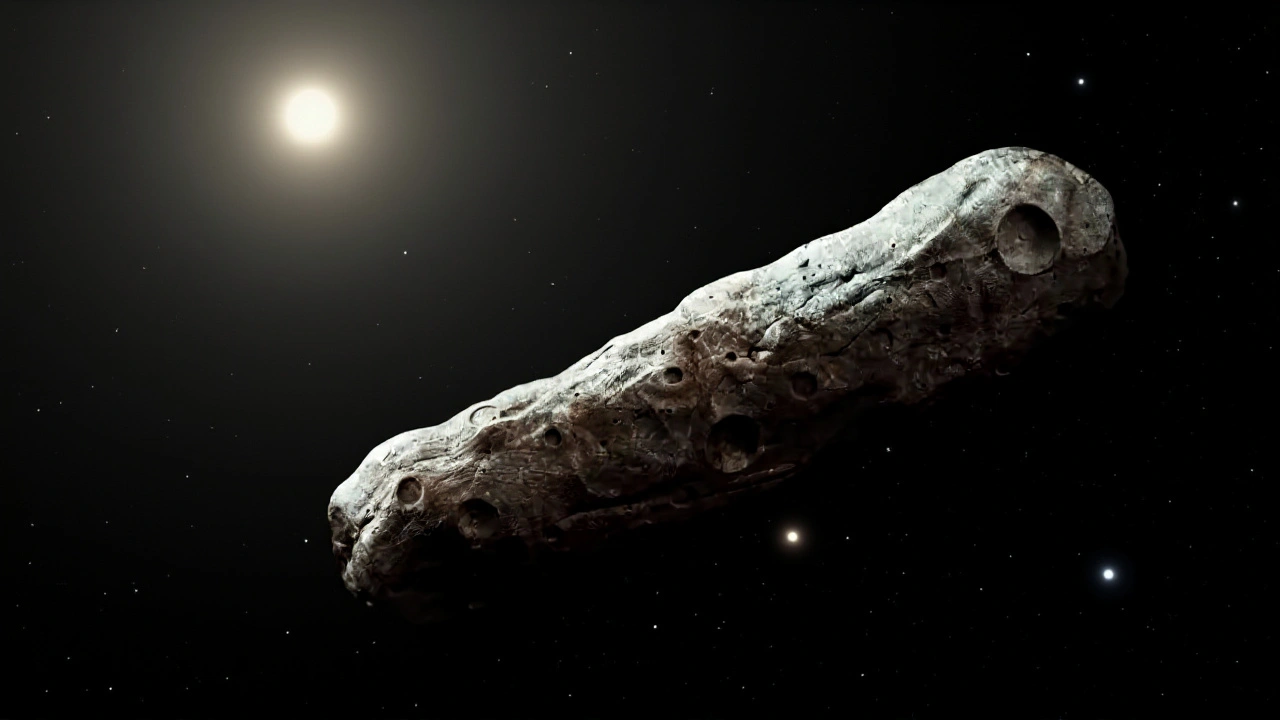Interstelární objekt – co to je a proč nás zajímá
When reading about interstelární objekt, těleso, které letí mezi hvězdami a není gravitačně vázáno k naší sluneční soustavě. Also known as interstellar body, it arrives from deep space and often surprises astronomers with its speed and composition.
To understand its place in the cosmos, we also need to look at similar but bound objects. A kometa, ledová koule s prachem a plynem, která obíhá kolem Slunce a vytváří ohon při přiblížení shares icy traits with many interstelární visitors. An asteroid, skalní těleso, často kamenné nebo kovové, které také obíhá Slunce, ale zůstává v pásu mezi Marsem a Jupiterem differs by lacking volatile material. The first confirmed interstellar wanderer, ‘Oumuamua, elongated, cigar‑shaped object detected in 2017, showed unusual acceleration that sparked debate about its nature, illustrates how these categories overlap and diverge.
Jak se objevují a studují interstelární objekty
Modern surveys like Pan‑STARRS and the upcoming Vera C. Rubin Observatory continuously scan the sky. These telescopes capture fast‑moving points of light, which are then flagged by software. The detection pipeline requires comparing new images with archival data, then calculating orbital parameters. If the trajectory is hyperbolic, meaning it doesn’t close around the Sun, scientists label it an interstelární objekt. This process embodies the semantic triple: interstelární objekt → vyžaduje → astronomické sledování. The data feeds into orbital databases, allowing rapid follow‑up with larger telescopes for spectroscopy.
Once an object is confirmed, researchers analyze its spectrum to infer composition. Some interstellar visitors show organic compounds, while others appear metallic. This ties into another triple: kometa → obsahuje → led a organické látky, whereas asteroid → má → kamennou strukturu. By comparing spectra, scientists can trace the object's origin to other star systems, enriching our picture of planetary formation beyond the Sun.
Why does it matter? Interstelární objekty act as messengers from distant worlds. They carry clues about the chemistry of other planetary disks, potentially revealing building blocks of life. When an object like ‘Oumuamua displays non‑gravitational acceleration, it forces us to reconsider models of outgassing and even entertain exotic hypotheses. This illustrates the connection: interstelární objekt → poskytuje → informace o cizích hvězdných systémech. Each discovery refines our understanding of how common planet‑forming processes are across the galaxy.
From a practical standpoint, tracking these fast objects also improves planetary defense. Though most interstellar bodies zip past Earth, the detection techniques overlap with asteroid monitoring, sharpening our ability to spot potentially hazardous asteroids early. The synergy between interstellar research and asteroid defense showcases another triple: asteroid → vyžaduje → monitorování pro ochranu Země.
For enthusiasts, the excitement lies in the unknown. Every new interstellar visitor forces textbooks to update and challenges amateurs to look up at the night sky with fresh eyes. You might wonder whether future missions could actually fly by or even rendezvous with such objects, turning a fleeting observation into a close‑up study. That prospect keeps the scientific community and curious public alike engaged.
In the list below you’ll find the latest articles that dive deeper into these topics – from the latest detection methods, through detailed analyses of specific interstellar visitors, to discussions about their implications for planetary science and the search for life. Explore the collection and stay updated on the fast‑moving mysteries that travel between the stars.

Avi Loeb: Interstelární objekt 3I/ATLAS může být mimozemská sonda
Harvardský fyzik Avi Loeb spekuluje, že mezihvězdný objekt 3I/ATLAS objevený v Chile může být mimozemská sonda; odborníci však argumentují, že jde o běžnou kometu.
Číst více